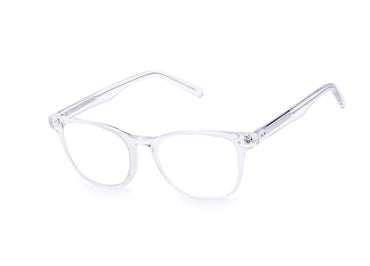Parts of Eyeglasses | The Basics Explained
Andy Mant
A pair of eyeglasses has three main components with some other elements that you need to know about.
The three main components of any glasses are:
- The front frame of the glasses
- The two temples of the glasses
Knowing the different technical names of the parts and areas on a pair of glasses will help you when you are chatting with your local optometrist or when looking to buy glasses online.
What Are the Different Parts of Glasses?

1. The Frame Front
The frame front is the front part of the frame of any pair of glasses and is the part that holds the lenses of glasses.
There are three types of frame fronts:
- Full-rim glasses
- Semi-rim glasses
- Rimless glasses
The frames can be made of different materials like plastic or metal frames.
2. The Lenses
The lenses are the part of the glasses that you look through. These can be clear lenses, prescription lenses or even UV protection lenses like you get in sunglasses.
Lenses help your vision to be clearer and to protect your eyes from debris.
Our BON CHARGE blue light glasses contain lenses that will help to filter out blue light wavelengths.
3. The Bridge
The bridge is the areas between the two lenses on a pair of glasses. You can get different styles of bridges and low bridge frame options.
4. The Nose Pads
The nose pads are the area that rests on top of your nose to keep a pair og eyeglasses or sunglasses on your face.
Eyeglasses can have built in nose pad area like plastic glasses normally do, or you can get replaceable nose pad
5. The Temples
The temples are also know as the two arms on glasses, which extend from the frame front at the hinge to the behind your ears at the temple tips.
The temples can come in different designs and also contain the measurements of a pair of glasses.
6. The Hinges
The hinges are the connection between the temples and the frame front of a pair of eyeglasses.
There are different types of hinges that all have their own benefits and styles.
Final Thoughts
Thankfully there aren't too many parts to a pair of glasses, but now you know the most important parts.



